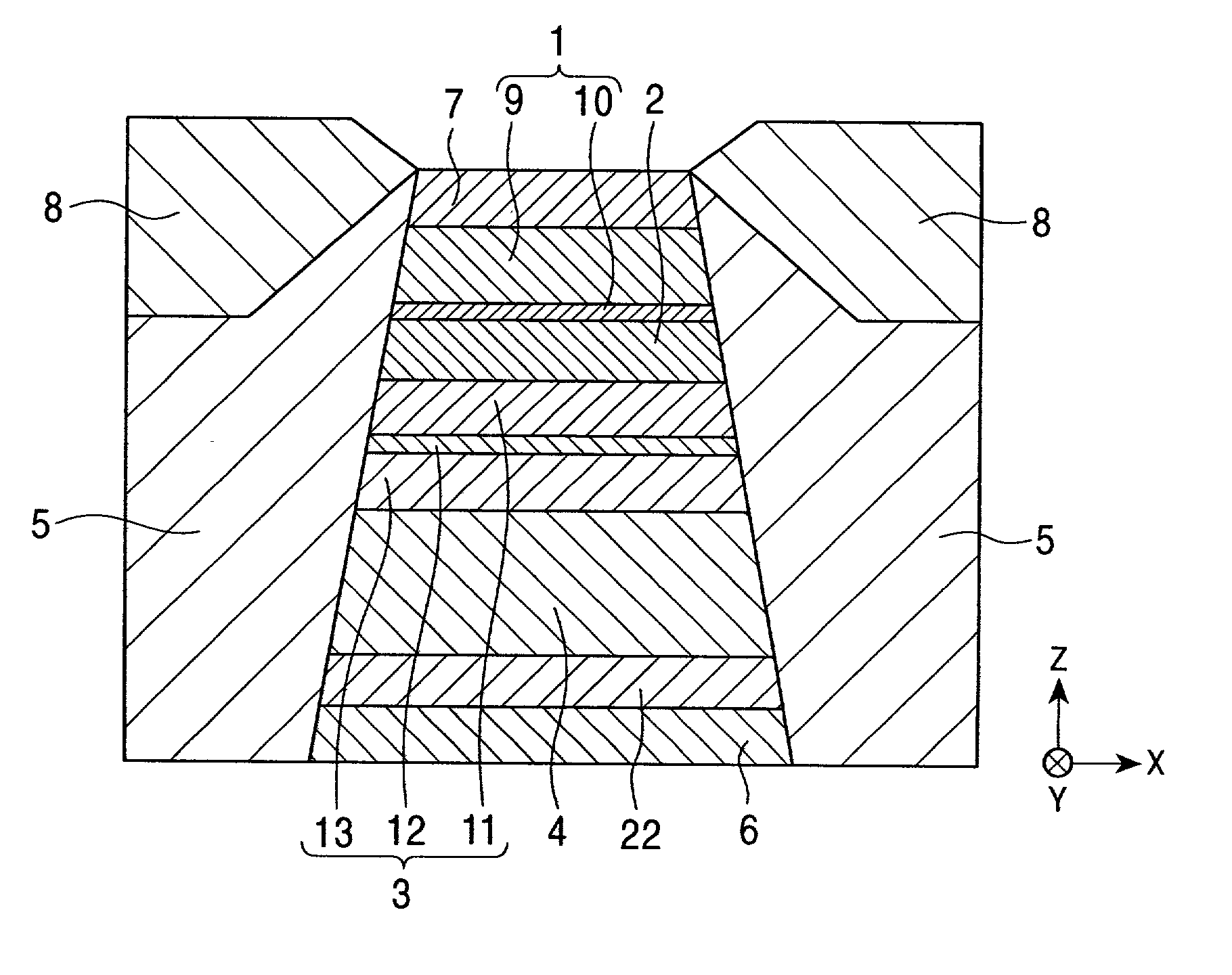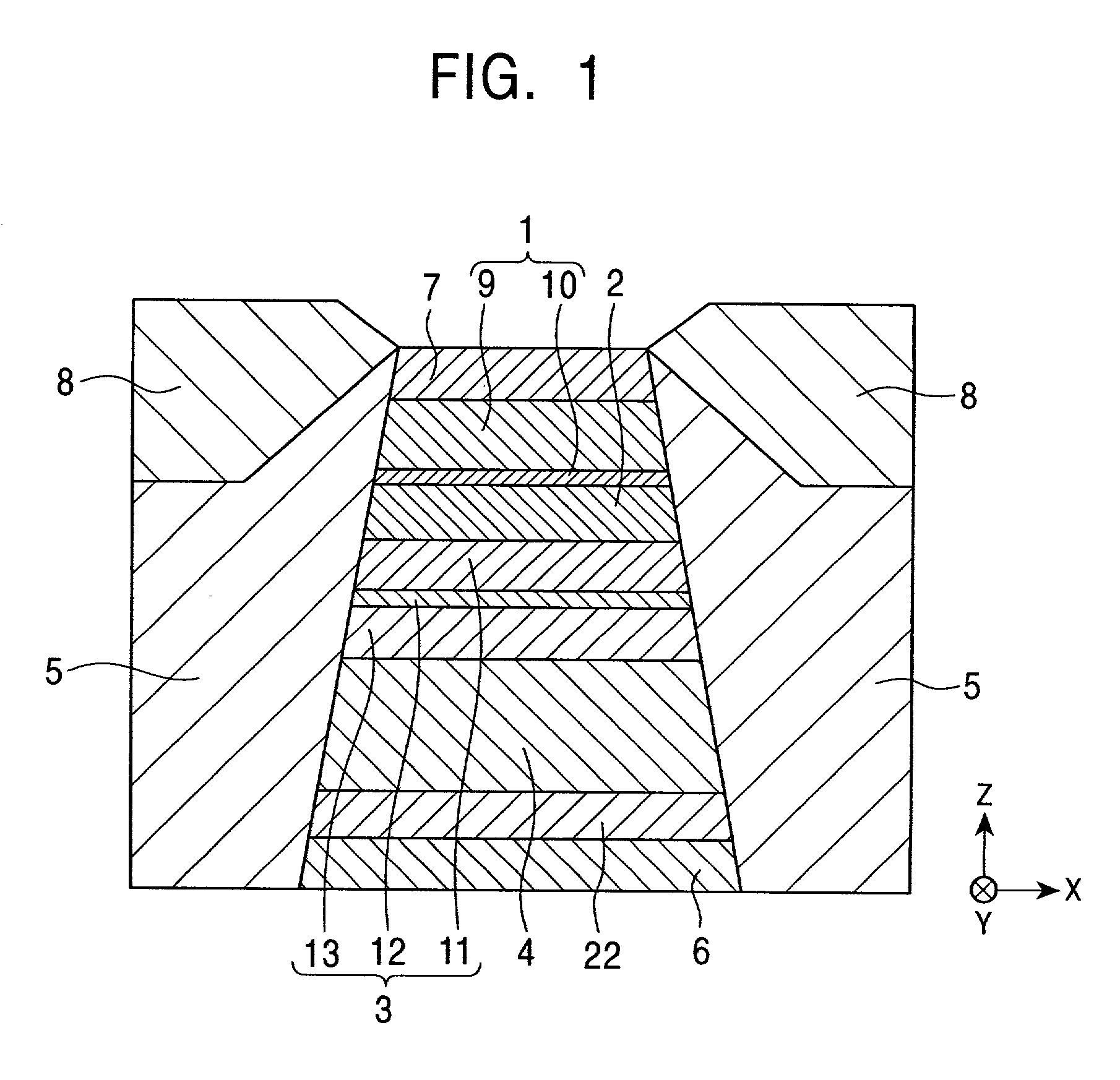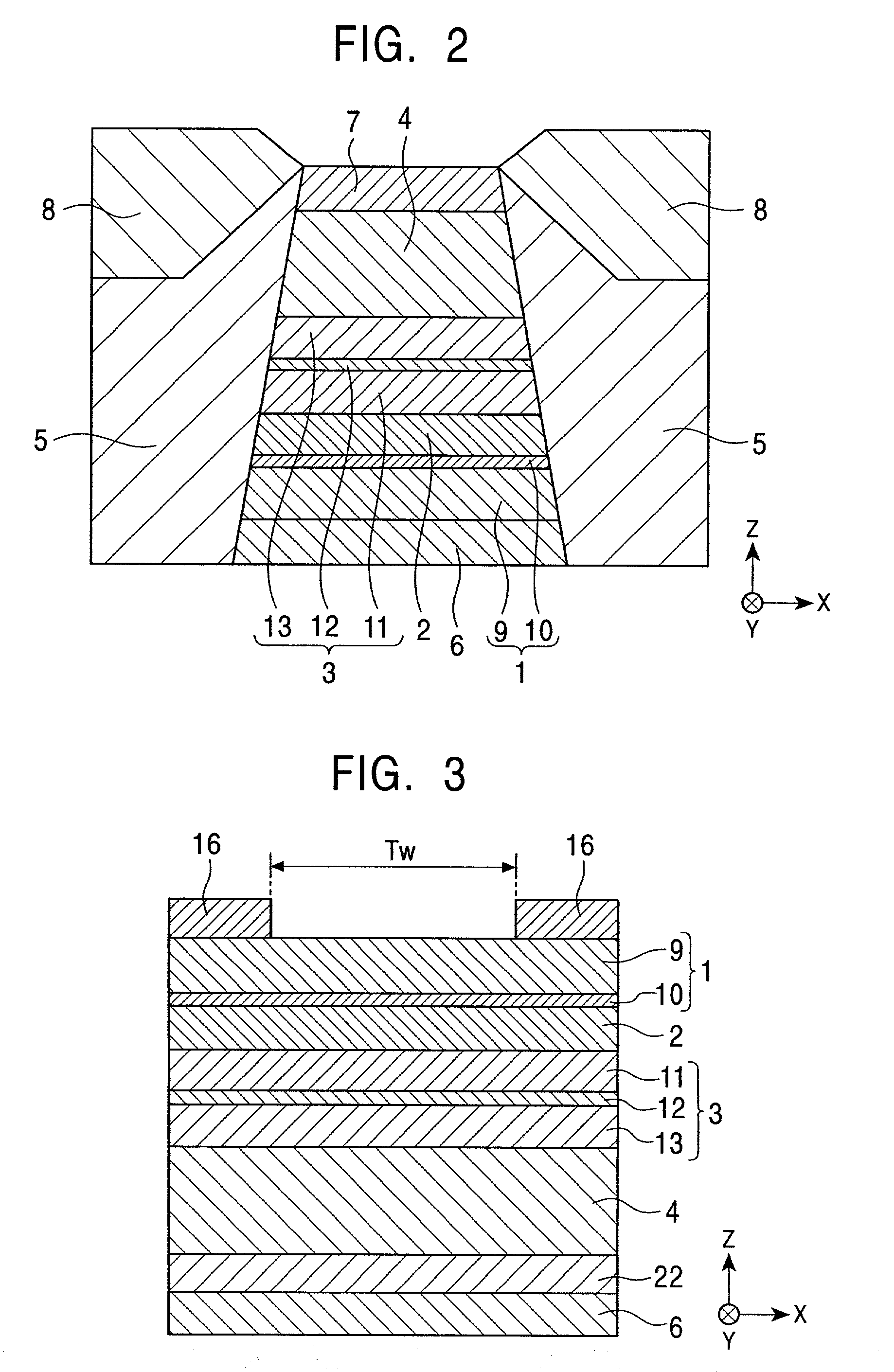Echange coupling film and magnetoresistive element using the same
- Summary
- Abstract
- Description
- Claims
- Application Information
AI Technical Summary
Benefits of technology
Problems solved by technology
Method used
Image
Examples
Embodiment Construction
[0375] A spin-valve film having the layer configurations described below was made. The content of Pt contained in a PtMn alloy layer constituting an antiferromagnetic layer is changed so as to examine the relationship between the Pt content and the exchange coupling magnetic field (Hex).
[0376] The spin-valve film included, from the bottom: a Si substrate; an alumina layer; a Ta underlayer 3 nm in thickness; a NiFe seed layer 3 nm in thickness; a Pt.sub.xMn.sub.100-x antiferromagnetic layer 15 nm in thickness; a pinned magnetic layer composed of a Co layer 1.5 nm in thickness, a Ru layer 0.8 nm in thickness, and a Co layer 2.5 nm in thickness; a Cu nonmagnetic interlayer 2.3 nm in thickness; a free magnetic layer composed of a Co layer 1 nm in thickness and a NiFe layer 3 nm in thickness; a Cu back layer 1.5 nm in thickness; and a Ta protective layer 3 nm in thickness.
[0377] Subsequent to the deposition of the layers of the spin-valve film, the deposited layers were heat-treated at a...
PUM
| Property | Measurement | Unit |
|---|---|---|
| Percent by atom | aaaaa | aaaaa |
| Temperature | aaaaa | aaaaa |
| Thickness | aaaaa | aaaaa |
Abstract
Description
Claims
Application Information
 Login to View More
Login to View More - R&D
- Intellectual Property
- Life Sciences
- Materials
- Tech Scout
- Unparalleled Data Quality
- Higher Quality Content
- 60% Fewer Hallucinations
Browse by: Latest US Patents, China's latest patents, Technical Efficacy Thesaurus, Application Domain, Technology Topic, Popular Technical Reports.
© 2025 PatSnap. All rights reserved.Legal|Privacy policy|Modern Slavery Act Transparency Statement|Sitemap|About US| Contact US: help@patsnap.com



